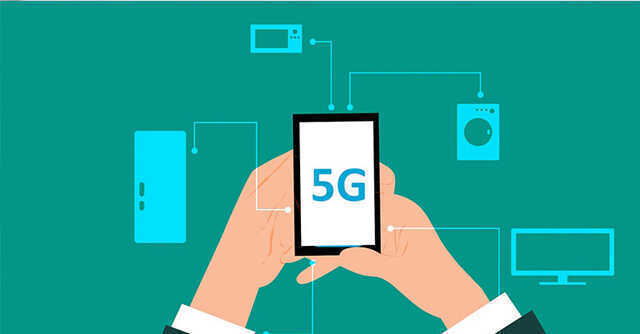
5G to create ₹36.4 trillion benefit for Indian economy: GSMA

Fifth-generation technology or 5G could benefit the Indian economy by ₹36.4 trillion ($455 billion) between 2023 and 2040, or more than 0.6% of the GDP forecast for 2040, according to analysis by GSMA Intelligence, reflecting the large number of 5G use cases that could be implemented in the main sectors of India’s economy.
“5G benefits are expected to be realised in new applications in the manufacturing sector (representing 20% of the total benefit) as well as the retail, ICT and agricultural sectors. The services sector, particularly healthcare and education, is also expected to benefit from 5G, driven by smart city and smart government applications,” the agency said in a report.
GSMA research further suggested that 5G will be a key enabler of enterprise digital transformation processes across manufacturing, energy and utilities, banking, transportation, healthcare, sports and retail. “Over a 15-year period from 2020 – 2034, US $565 billion in global GDP can come from mmWave 5G services,” it added.
“Given the importance of 5G to India’s digital future, it has become critical for the government and the mobile industry to collectively evolve and ensure the sustainable growth of the mobile industry,” it said.
Indian economy will rely heavily on the investments to be made by telecom service providers that will begin offering 5G services in key cities within this year and scale them up to cover the entire country in the coming years.
Last month, Reliance Jio announced plans to invest ₹2 trillion ($25.1 billion) in the rollout of a nationwide standalone 5G network by December 2023, while Bharti Airtel is aiming to cover all of urban India with 5G in the same time frame, and nationwide coverage by March 2024.
GSMA estimates that between 2022 and 2025, operators in India will invest around ₹1.6 trillion ($19.5 billion) in their networks, which will form the bedrock for opportunities in the consumer and enterprise segments.
Being the biggest single market for communication services, while a high level of 4G adoption (79%) is indicative of a subscriber base ready to transition to 5G, the agency said, relying on trends of growing demand for 5G smartphones despite the considerably higher average selling price which it said was $400 or Rs 32,000 as of June 2022, compared to ₹8,000 ($100) for all smartphones.
“The number of 5G smartphones in the market continues to rise; there were around 50 million 5G smartphones in June 2022, with another 20–30 million expected by the end of the year,” it said.
However, it said further reforms were required to support the development of advanced telecom infrastructure besides incentives for industry to invest. This could be done by improving ease-of-doing-business processes more broadly, with policymakers taking steps to create a stable business environment that fosters competition, protects consumers and encourages sustainable investment.
“High regulatory levies and taxes that are sector-specific can have a disproportionate impact on operators and in turn vulnerable consumers, and should be avoided to ease the enormous burden of network rollout by operators,” it added.

